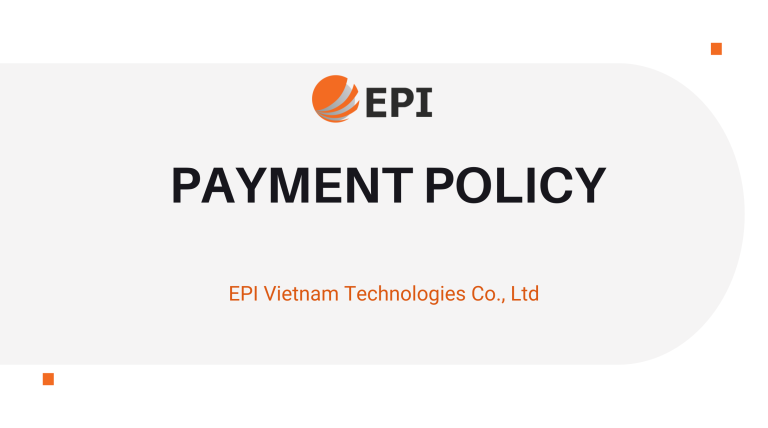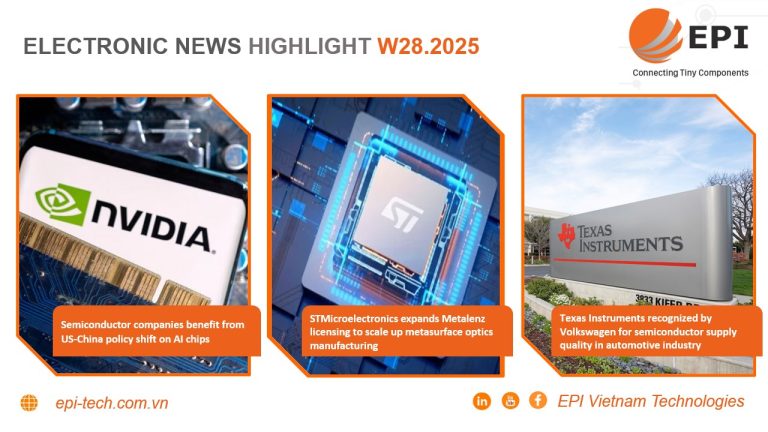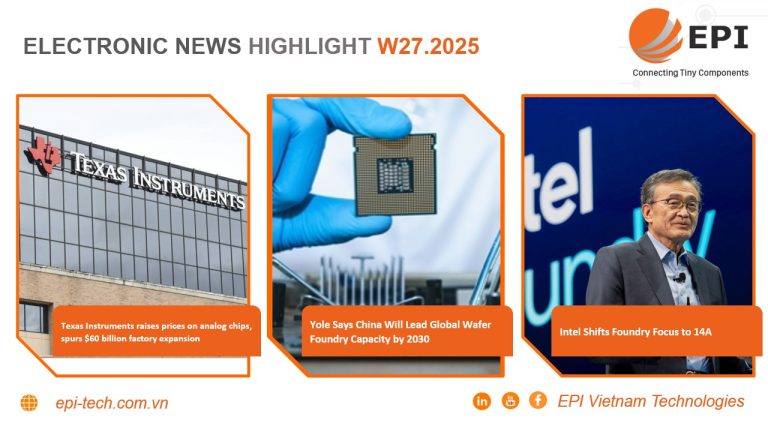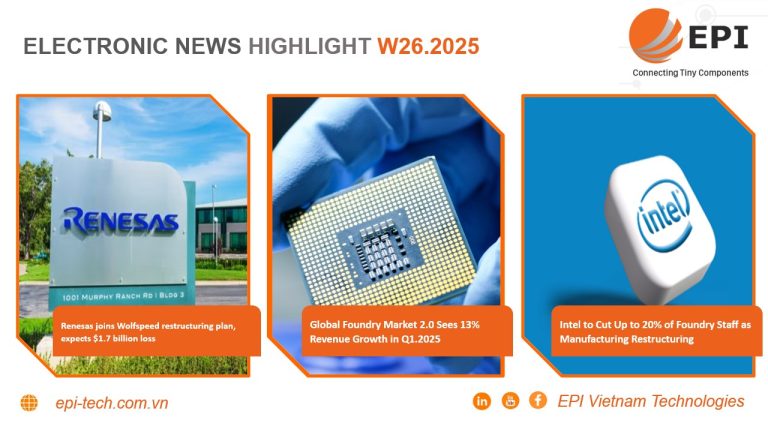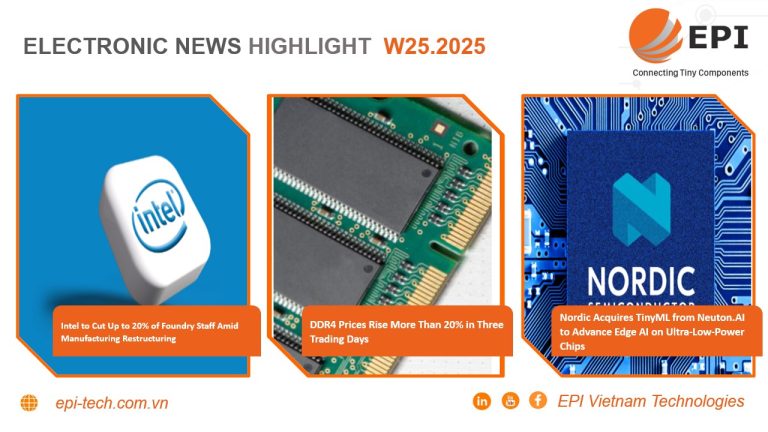ELECTRONIC NEWS HIGHLIGHT W08.2025
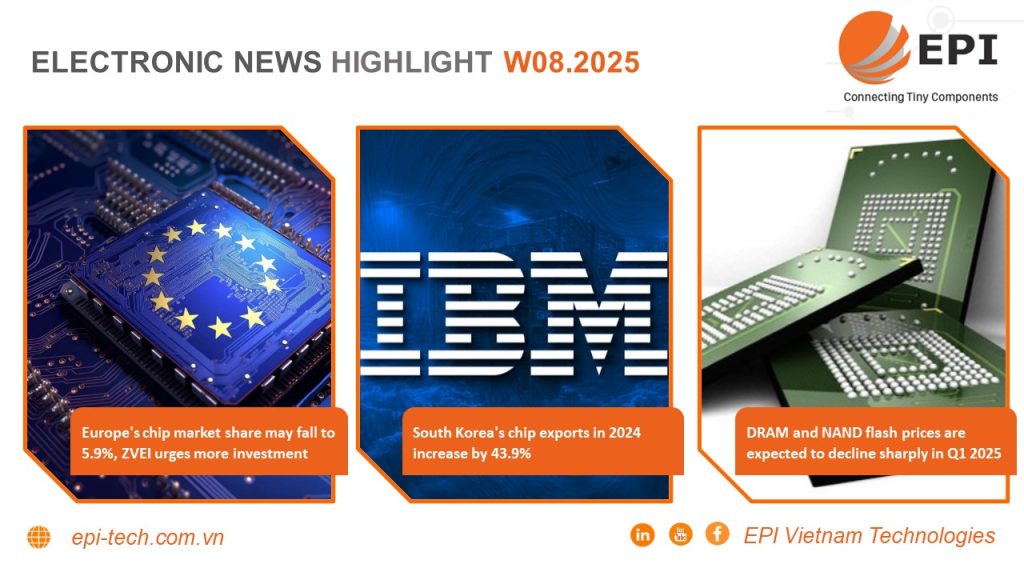
1. Europe’s chip market share may fall to 5.9%, ZVEI urges more investment
The German electrical and electronics manufacturers association ZVEI has warned that although subsidies for chip manufacturing have shown positive results, stronger support is needed for Europe to remain competitive. on the global market.
According to a report published by ZVEI, the current level of support is not enough for the EU to achieve its goal of accounting for 20% of global chip manufacturing capacity by 2030. The report predicts that Europe’s global chip manufacturing market share has could decrease from 8.1% to 5.9% as other regions surpass Europe with stronger investment. Europe is at risk of losing more production capacity and becoming a pawn serving the interests of political forces.
The report, compiled by Tanjeff Schadt, highlights the strong financial returns of investments in microelectronics, which can pay off within nine to 12 years. Current investment plans are expected to generate 33 billion euros in annual added value for Europe, 7.9 billion euros in additional tax revenue and the creation of 65,000 new jobs, including 49,000 in Germany. Furthermore, it is estimated that each direct job in this sector creates six additional jobs along the value chain. These numbers clearly demonstrate that investments bring significant returns and lay the foundations for European competitiveness and innovation.
The EU’s share of the global electronics and printed circuit board manufacturing market remains below 5%, with 85% to 90% of global production concentrated in mainland China and Taiwan, causing an imbalance market share.
Learn more: Europe’s chip market share may fall to 5.9%, ZVEI urges more investment
2. South Korea’s chip exports in 2024 increase by 43.9%
According to the latest data from South Korea’s Ministry of Trade, Industry and Energy, the country’s chip exports jumped 43.9% in 2024, reaching a total of $141.9 billion, a new record high surpassing the previous record. The previous $129.2 billion was set for 2022. This growth is mainly driven by strong demand for high-end products, especially high-bandwidth memory chips HBM and other advanced technologies.
Despite falling global semiconductor prices, South Korea’s chip exports still grew strongly, contributing significantly to overall export growth. In December 2024, chip exports increased 41.5% year-on-year, reaching $14.5 billion, setting a new monthly export record. Exports to China increased 8.6%, while exports to the United States increased 5.5%.
The semiconductor industry remains the biggest driver of South Korea’s exports in 2024. Overall, the country’s exports increased by 8.2% year-on-year, with strong chip exports helping driving total export value to a record level, emphasizing the important role the industry plays in supporting the Korean economy.
Despite global economic challenges and expectations of slowing demand, South Korea’s semiconductor exports have shown resilience.
Learn more: South Korea’s chip exports in 2024 increase by 43.9%
3.DRAM and NAND flash prices are expected to decline sharply in Q1 2025
According to TrendForce’s latest forecast, the memory chip market is expected to decline significantly in the first quarter of 2025, due to inventory buildup and weak seasonal demand. DRAM and NAND Flash prices are both expected to decrease significantly.
In the DRAM market, prices are expected to decline between 8% and 13% in the first quarter of 2025. The VRAM segments for PCs, servers, and GPUs will be particularly affected. Weak consumer demand and oversupply of DDR4 modules are the main drivers, with DDR5 adoption steadily increasing but still not enough to offset DDR4 oversupply. In the server market, the transition from DDR4 to DDR5 and HBM high-bandwidth memory continues to impact prices, although a glut of DDR4 remains a price restraint. VRAM prices for GPUs are also expected to decrease by 5% to 10%, mainly due to weak demand and increased inventory levels.
The NAND Flash market is also under pressure, with average prices expected to decline 10% to 15% in Q1 2025. Rising inventory levels and sluggish demand are expected to push up SSD Client prices and other UFS product down. While enterprise SSDs are benefiting from strong demand driven by AI and storage applications, their first-quarter prices are still expected to decline 5% to 10% due to seasonal slowdowns.
In the eMMC segment, contract prices are expected to decline between 13% and 18% in the first quarter of 2025. Smartphone manufacturers are focusing on selling off inventory, while consumer demand is weak cause more pressure. Similarly, the UFS market is facing a price decline of 13% to 18% due to slowdown in overall smartphone demand.
Overall, the first quarter of 2025 is expected to see a persistent supply-demand imbalance in the memory chip market, leading to increased price pressure. While adoption of newer technologies such as DDR5 and HBM could spur long-term growth, near-term DRAM and NAND Flash prices are likely to continue to decline, providing favorable buying opportunities for buyers but increases competition for suppliers.
Learn more: DRAM and NAND flash prices are expected to decline sharply in Q1 2025



 English
English  Tiếng Việt
Tiếng Việt 







